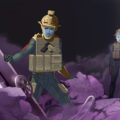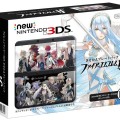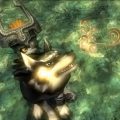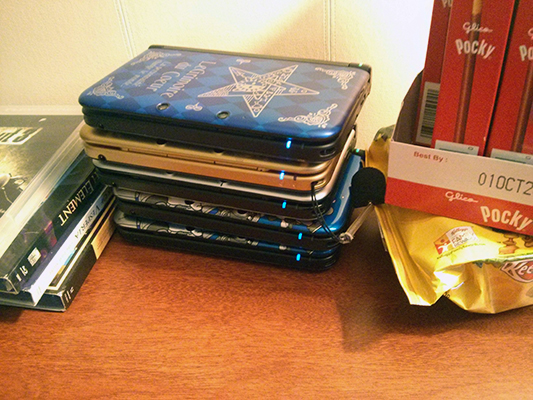The Nintendo 3DS: Geoff’s Picks
Now that Nintendo has disabled access to the eShop for 3DS and Wii U (far too soon, honestly), this is good time to reflect on the histories of both platforms. It’s an opportunity to consider just how horrendous a move this was for video game preservation and the number of games you perhaps should have purchased during the doomsday countdown (unless publishers do their duty and get on porting them to newer platforms — I have my fingers crossed). More positively, it’s a time to think about the most enjoyable games played on the actually-successful Nintendo 3DS. It wasn’t the phenomenon the preceding Nintendo DS was, but it nonetheless did respectably well for what was, if you can believe it now, the last successful mainstream dedicated handheld video game system.
I first considered doing a retrospective for the system, but I went over enough of its history in my 5th anniversary post that I’d be both retreading familiar territory and not have enough for another post without some creative stretching. I have not, however, had the opportunity to talk about my five favorite games on the system, as I’ve done with other platforms. It’s a shame that you can no longer buy these unless you can procure a code, as all of them remain exclusive to the platform. Outside the clear and inevitable alternative (hacking your system and playing the roms), publishers will hopefully and wisely port them.
Shin Megami Tensei IV
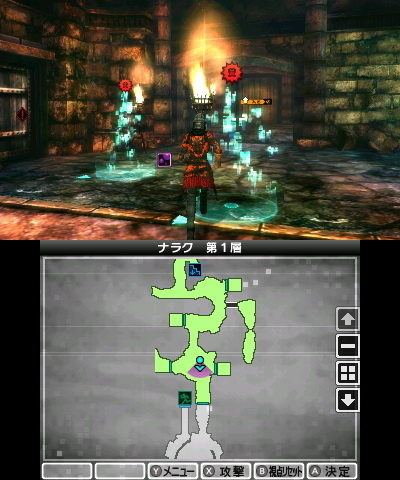
After making a steady number of RPGs for handheld platforms by this point a decade ago, Atlus took a chance on making a numbered Shin Megami Tensei installment for a handheld (the first in just over nine years at the time) with Shin Megami Tensei IV. The game featured contentious changes compared to its predecessors though changes in character and demon designers, but the core of what made the SMT titles great remained. The designs remained well above other games in the genre, particularly if you were a Tokusatsu fan. The game itself was a rewarding adventure through Tokyo that retained most of the challenging battles, dungeon exploration, and demon fusion and negotiation. It was the dungeon and Tokyo location exploration that stood out for the system it was made for, some of the best offered on 3DS that no other game topped — RPG or otherwise. I would argue that few games have done this as well since, with the fusion of its dark atmosphere and superlative soundtrack.
The game received a direct sequel, Shin Megami Tensei IV: Apocalypse, which improved on the challenge and dungeon design. But I’m disqualifying that from my list because I haven’t finished it. Perhaps I’ll do so one day.
Kid Icarus: Uprising
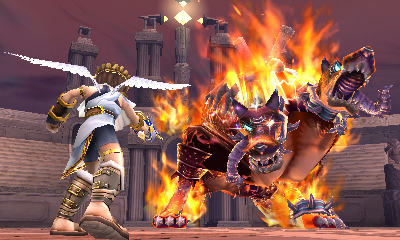
Kid Icarus: Uprising was both invigorating and intimidating from its outset. The presentation placed it among the best for a non-ported title on 3DS thanks to the incredible character models and art direction (the latter standout element among video games as a whole — even now), soundtrack, and voicework. But oh man did it take time to adjust to the controls, with none of the offered methods being on par with having a second analog stick. (The game was never patched to take advantage of the second nub on the New 3DS and 2DS models.) But once I found an optimal method (the “traditional” combination of the included stand and stylus method), the game clicked and became one of the best shooter adventure titles to grace the system. The game, through its constant challenging action and aforementioned stellar presentation, provided an experience that I’ll remember for the remainder of my gaming life.
Etrian Odyssey IV: Legends of the Titan
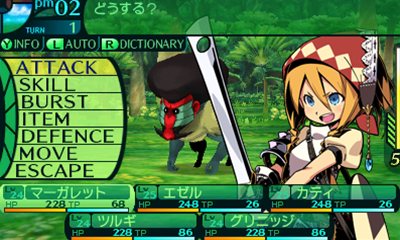
Not long before SMTIV released, Etrian Odyssey IV was the RPG for Atlus to top on the 3DS. The first Etrian Odyssey title to grace the system offered far more exploration options than its predecessor through its inclusion of smaller and larger dungeons, while presenting them in fully 3D polygonal presentation. The EO games are known for the challenge they include, and while this one did, it excelled at easing players like my timid and fragile self into the experience, and then increasing the challenge.
The minimalist story presentation with a party consisting of optional and silent chibi portraits made for a gameplay-first experience, though the development team made sure to not make its battle and dungeon spelunking difficult to a cheap degree. This was all wrapped in a beautiful orchestral-synth soundtrack from Yuzo Koshiro, with compositions on par with anime theatrical films. I understand the preference for Koshiro’s FM-synth soundtracks, and I adore those too, but I adored the presentation he went for here.
Future EO games offered further presentation and gameplay environments, but this one stuck in my mind thanks to setting them down that path.
The Legend of Zelda: A Link Between Worlds
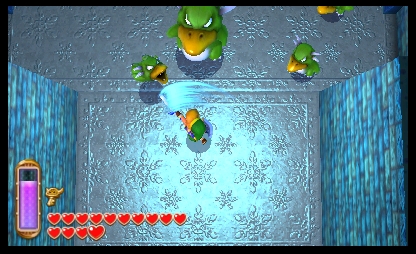
The Legend of Zelda: A Link Between Worlds was a marvel for the franchise when it first released in terms of what it represented, which remains the case now. The game, itself a sequel to A Link to the Past, presents a more non-linear experience compared to many Legend of Zelda predecessors while also including a familiar iteration of Hyrule with enough differences, including new obstacles, locations, and, enemies, that made it worthwhile to explore and backtrack through. The puzzles that took advantage of Link’s Wall Merge gimmick were enough to carry many of the game’s dungeons, alongside renting and eventually purchasing the necessary items and equipment from Ravio to complete them in any order. The challenge wasn’t on par with its predecessor, but that didn’t matter when everything else was so perfect (if not better) than the prequel thanks to its immense polish. It served as proof that Nintendo still knows how to make a solid 2D Zelda game, even though it’s a pity they haven’t provided one since.
Fire Emblem: Awakening
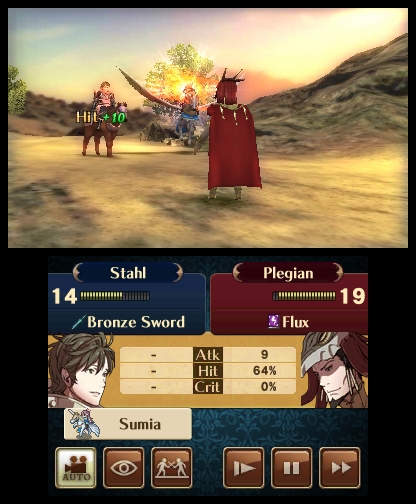
It is, in retrospect, ridiculously easy to see how and why Fire Emblem: Awakening revived the Fire Emblem brand after a semi-lengthy time of dormancy, the reason why the game remains highly memorable in my mind. It included the excellent strategy gameplay of its predecessors through an aesthetically pleasing 3D presentation, complete with plenty of voice acting for its story and characters, and a great soundtrack, while also throwing a bone to the significant shipping community through the option to pair characters together and have children. The game struck an equal balance between strategy and relationship-building while maintaining solid gameplay pacing and storytelling, and I had a great time doing both.
This ended up being both a blessing and a curse, because the fusion of the two key elements hasn’t been topped since. But that’s what makes Awakening so memorable and essential.
This list stands as a testament to how great the 3DS lineup was, alongside runners-up like Bravely Default: Flying Fairy, Shin Megami Tensei: Devil Summoner: Soul Hackers (itself a port of a Saturn and PlayStation game, though this was the first to be localized), and Donkey Kong Country Returns 3D (which I played for the first time on this system). It’s also a damning indictment, with Nintendo disappearing a store packed to the brim with superlative titles in a harrowingly quiet instant. Every single one of these games deserves to be ported to future platforms, ideally some offered by hardware manufacturers who give more of a damn about software archives. But let’s never forget where many of them originated.


